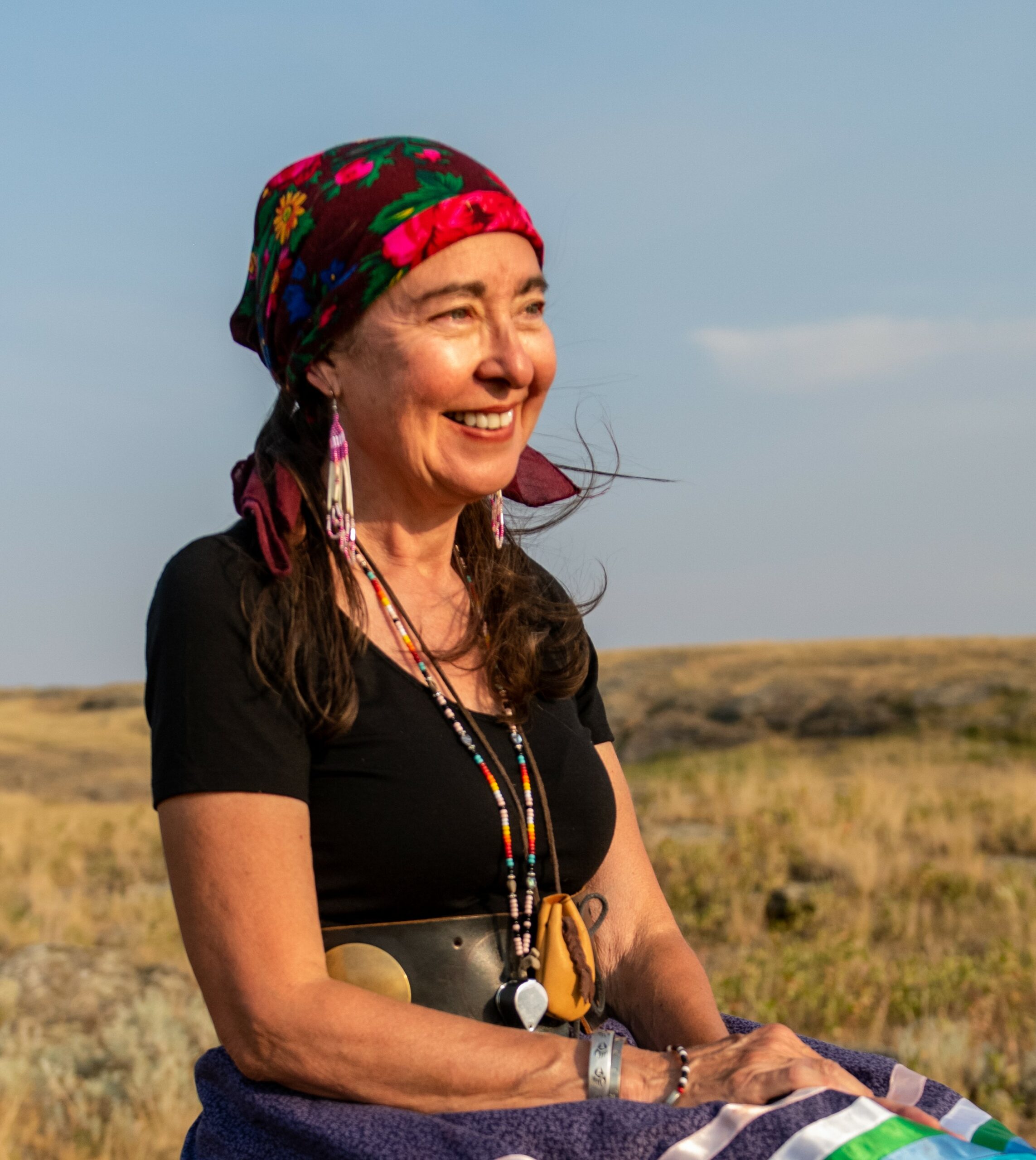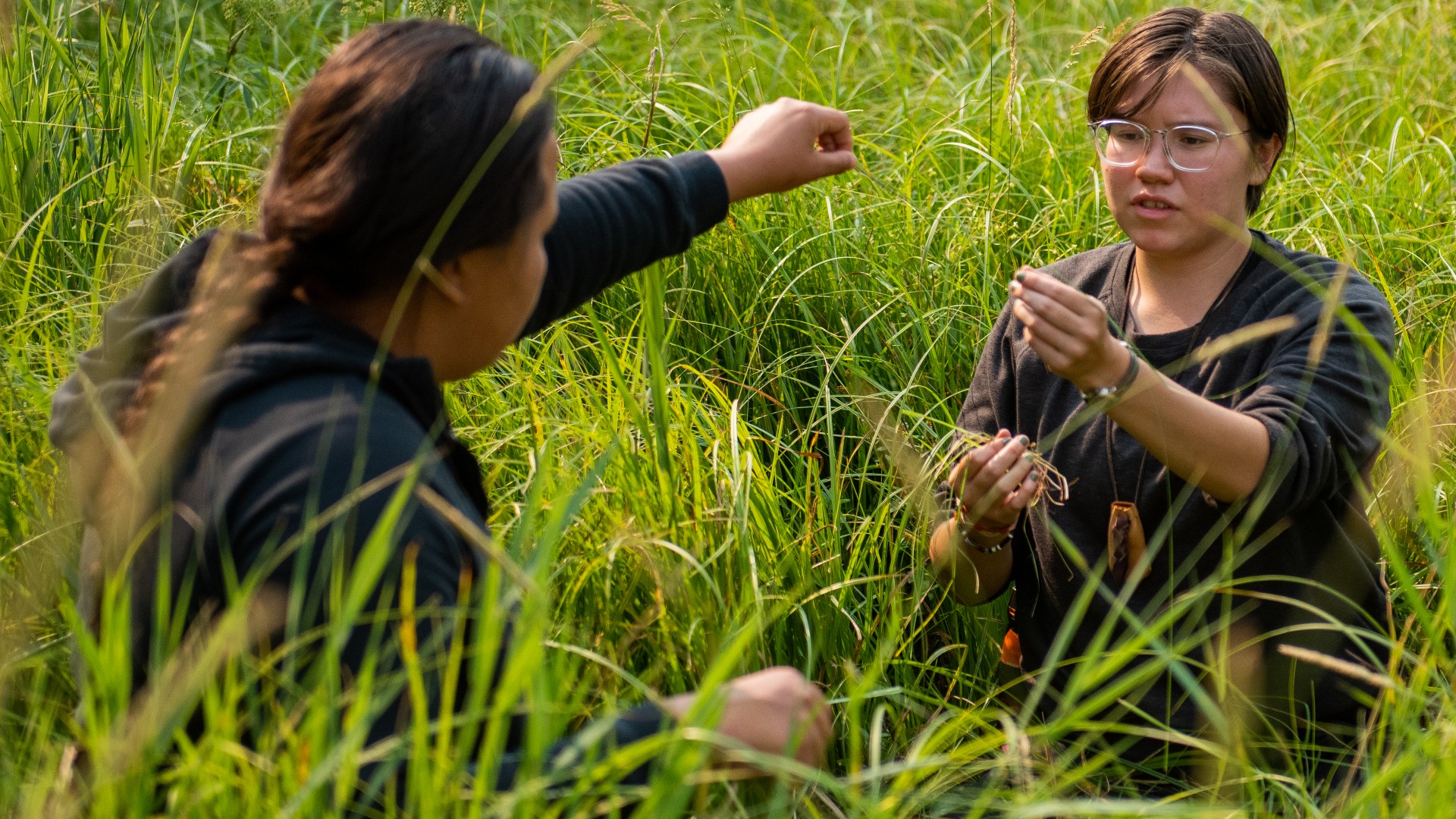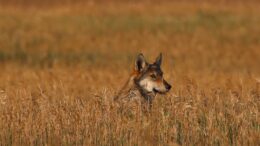When Cristina Eisenberg left the Central Coast of California in the 1990s looking for a wilder place to raise her children, she found it in a remote part of northwest Montana. The first night in their cabin — adjacent to more than 2 million acres of wilderness — she fell asleep to the sound of wolves howling.
Over the years she watched newly arriving wolves transform the ecology of her backyard — and the trajectory of her life. Wanting to better understand how the presence or absence of wolves can change a landscape, she went back to school, earning a master’s in conservation biology and then a Ph.D. in forestry and wildlife.
“It was because of the wolves,” she says. “They’re teachers.”
Today she’s a graduate faculty member at Oregon State University and works as a community ecologist. Her recent efforts include a grassland restoration project with the Fort Belknap Indian Community and the Bureau of Land Management in Montana, and a study of bison, fire and wolf ecology with the Kainai (Blackfoot) First Nation in Canada’s Waterton Lakes National Park.
The Revelator spoke to her about ecological restoration, her biggest surprise as a scientist, and the importance of using western and Native science to solve our toughest environmental challenges.
How did you end up becoming a scientist?
We were living in California in the mid-’90s on the Central Coast and all of a sudden it got super developed. I knew that I didn’t want to raise my kids there. So my family and I moved to this [remote] part of Montana.
We live in a funky, small log cabin and our backyard is 2.7 million acres of federally protected wilderness. Our first night in our cabin it was summer, so I opened the window and I heard this sound. I felt like I’d been hearing it all my life, but it was the first time I’d really heard it. It was the sound of wolves howling.
I knew they weren’t supposed to be there, but we started seeing wolves running through our land. They had come down from Canada. We had a big meadow, and the deer and the elk used to come and eat. We thought that was lovely. Little did I know that those animals were tame, because there were no wolves around yet.
But when wolves started denning near us, we saw everything on our land change. Within three years that meadow ceased to exist — it just filled in. And all these birds showed up that were never there before, and the deer and elk disappeared. Not because the wolves wiped them out — it was because they got rewilded in order to stay alive.
My kids said, “Mom, you should go back to school and study this.” So I did. I got my master’s degree and then I realized that in order to be able to help create change in terms of conservation, I really needed to get a Ph.D., and I needed to get it from a very conservative institution. So I got my Ph.D. at Oregon State University studying wolves and trophic cascades.

What does it mean to be a community ecologist?
I’m Native American and I also have a background as a formally trained western scientist as a community ecologist. This is a field in western science that arose around 1980. It’s very different from the single species approach to doing ecology. It looks at how energy flows to the whole system and the relationships between the different components.
To do that you collect data on the plants, animals, birds. You look at what the trees are doing. I’ve used GPS collars on wolves and elks, for example. My research partner, Tom DeLuca, is a soil scientist, so we’re looking at soils, too.
What does all this look like in action?
One of my projects is working with the Fort Belknap Indian community, which is the Aaaniih and the Nakoda Tribes.
My work in Fort Belknap and on surrounding federal lands looks at how climate change is affecting the grassland there, focusing on culturally significant traditional plants. This is in response to the catastrophic fires that have been occurring as a result of climate change.
Part of what we do is we collect seeds of native plants. We assess the ecological conditions of tribal lands and federal lands, and we’re working on creating an ecocultural restoration plan for both federal lands and tribal lands.
I have at-risk tribal youth join me in the field, and I provide well-paying jobs for them as technicians. I train them, but really, we’re learning from each other because it’s their land. And nobody knows it better than they do.
These young people who have deep transgenerational trauma caused by all the stuff that came with settler colonialism — the genocide, the disease, the residential schools — they just thrive.
They blossom because their knowledge is being respected by me and others. And they’re collecting real data that are vital. They’re just completely engaged, and many of them go on to college. Some of them over the years have become major leaders.
What have you and your research partners found there?

Fort Belknap is a nearly 700,000-acre reservation that was created around 1870. It’s surrounded almost completely by federal lands managed by the BLM. Last summer we had a Category 4 drought, which is an extreme drought, in our study site. A top priority for us is to collect seeds of native plants for two reasons — to use them to restore areas and also to establish a bank of seeds that are genetically tied to certain areas, because they may go extinct.
We went out to collect seeds on the federal land last June, and in many sites there was nothing growing taller than my ankles. These are important prairie grasses that stabilize the soil and provide excellent food for wildlife.
In one place they had grown to as high as my knees, and it looked like they had bloomed and made seed pods. But when I looked at the seed pods, they were hollow. They had not formed a cotyledon, which is like a fetus.
Then I went on reservation land, and I found the prairie grasses were as tall as my shoulders. The populations of native species that had seeds in them that were suitable for collecting extended from horizon to horizon. We collected 23 pounds of seeds.
You couldn’t even tell there had been a drought on the tribal land. I’d never experienced anything so surprising in my career as a scientist.
These sites are adjacent. This is the same habitat, the same plant community, the same amount of precipitation, the same slope and aspect in elevation. What was the difference? We had trail cameras put into our plots because I thought maybe it has to do with cattle grazing on public lands. We found that on tribal lands, there were quite a few cattle grazing there, so it wasn’t driven entirely by cattle grazing. There’re also bison on the tribal lands.
What my colleagues and I have concluded is that it probably has to do with the tribal land being managed using traditional ecological knowledge, which includes things like use of prescribed fire.
But we’re going to figure this out using western science. We’re going to do a really intensive study of what goes on in the soil, because every time there’s a fire, it leaves a legacy of carbon in the soil, and you can measure that. We’re going to go back this summer and try to determine what it is that makes those tribal lands so much more resilient.
What have you learned looking at restoration with the wide lens of a community ecologist and also with traditional ecological knowledge?
What has become really clear to me is that in order to respond to the ecological crisis we’re facing — global warming and all of the implications of that, plus unsustainable use of natural resources and the extinction crisis — the ancient knowledge held by Indigenous people offers a lot of solutions.
As an ecologist, I don’t think we are capable of finding the solution [to our environment problems] using western science without incorporating traditional ecological knowledge or Native science.
Humans lived very sustainably on the planet. There was a large population of humans before colonization in North America, for example. And these ways of relating to the natural world were very much grounded in ethics and spiritual beliefs about the human’s role in the world. And those values are intrinsic to Native science.
If we’re going to save the world, we need to save ourselves. And that means we need to address things like racism and really come together because we need each other. All of the traditional ecological knowledge by itself can’t really create the change that we need, unless we partner with western scientists and vice versa. And in order to do that, we have to treat each other as equals.
![]()


